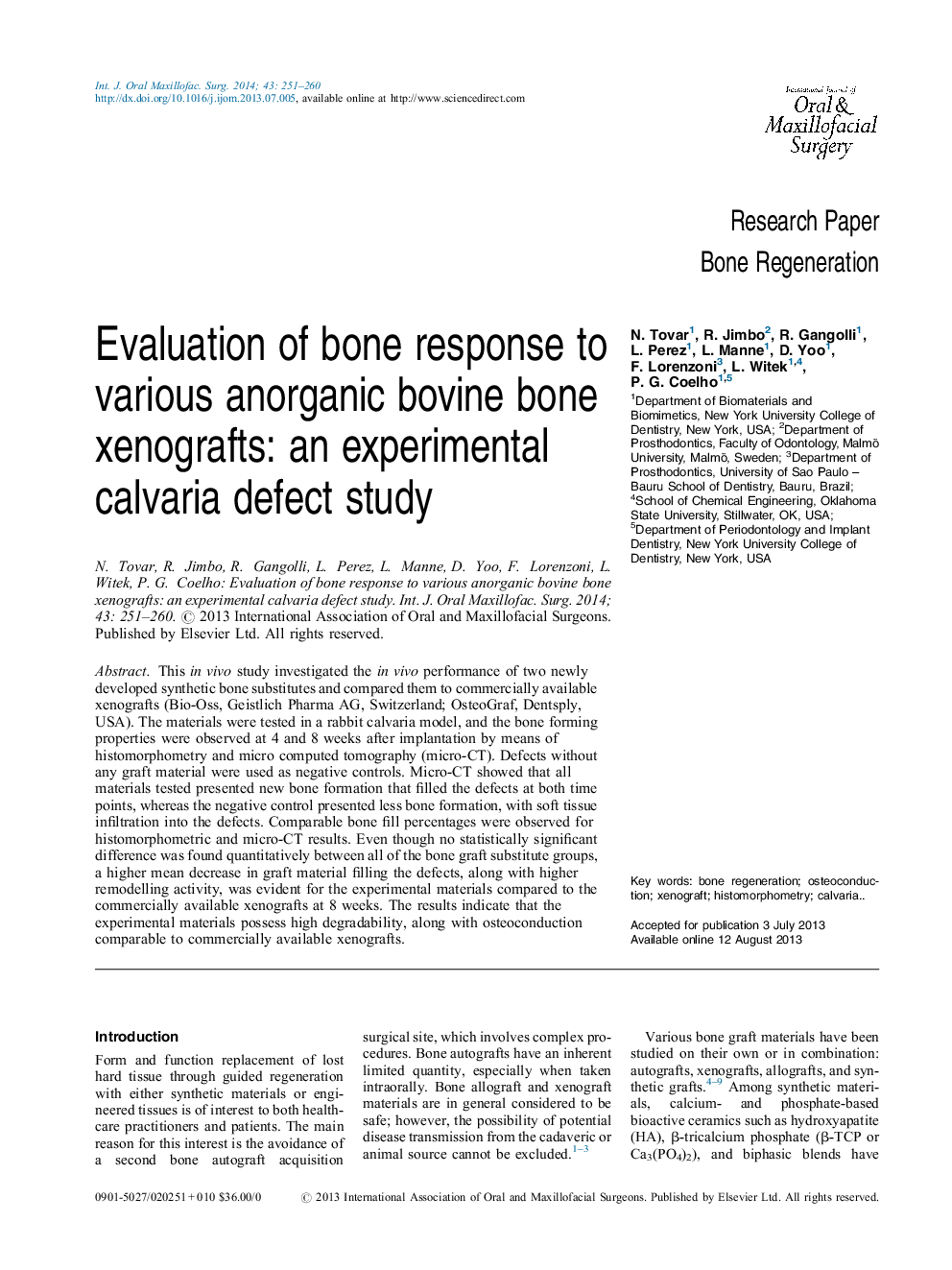| Article ID | Journal | Published Year | Pages | File Type |
|---|---|---|---|---|
| 3132468 | International Journal of Oral and Maxillofacial Surgery | 2014 | 10 Pages |
This in vivo study investigated the in vivo performance of two newly developed synthetic bone substitutes and compared them to commercially available xenografts (Bio-Oss, Geistlich Pharma AG, Switzerland; OsteoGraf, Dentsply, USA). The materials were tested in a rabbit calvaria model, and the bone forming properties were observed at 4 and 8 weeks after implantation by means of histomorphometry and micro computed tomography (micro-CT). Defects without any graft material were used as negative controls. Micro-CT showed that all materials tested presented new bone formation that filled the defects at both time points, whereas the negative control presented less bone formation, with soft tissue infiltration into the defects. Comparable bone fill percentages were observed for histomorphometric and micro-CT results. Even though no statistically significant difference was found quantitatively between all of the bone graft substitute groups, a higher mean decrease in graft material filling the defects, along with higher remodelling activity, was evident for the experimental materials compared to the commercially available xenografts at 8 weeks. The results indicate that the experimental materials possess high degradability, along with osteoconduction comparable to commercially available xenografts.
